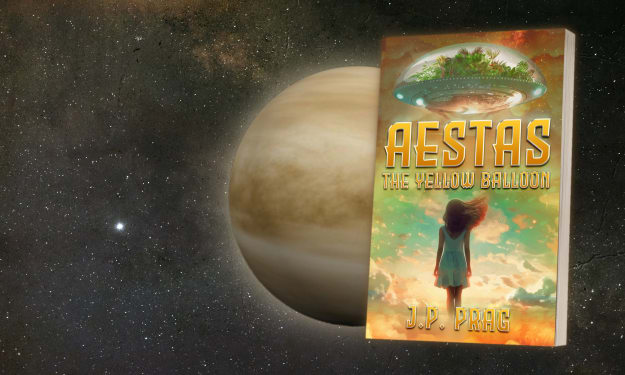
Astronomers at MIT and elsewhere have discovered a new multi-planet system near our own Milky Way galaxy that is just 10 seconds apart from Earth, or about 33 light-years, making it one of the closest known multi-planet systems to our own.
At the heart of the system is a small, cool M dwarf star called HD 260655, which astronomers have found to have at least two Earth-sized Earth-like planets. The rocky worlds may not be habitable because their relatively compact orbits expose the planets to temperatures too high to sustain liquid surface water.
However, scientists are excited about this system because the proximity and brightness of its star will allow them to look more closely at the planets' properties and any signs of atmosphere they may have.
"Because of the brightness of their stars, both planets in the system are considered among the best targets for atmospheric studies," said Michelle Kunimoto, a postdoctoral fellow at MIT's Kavli Institute for Astrophysics and Space Research and one of the lead scientists on the discovery. "Is there a volatile-rich atmosphere around these planets? Are there signs of water or carbon-based species? These planets are an excellent test bed for these explorations."
The team will present its findings today at a meeting of the American Astronomical Society in Pasadena, Calif. The MIT team includes Katharine Hesse, George Ricker, Sara Seager, Avi Shporer, Roland Vanderspek, and Joel Villaseñor, as well as collaborators from institutions around the world.

Data Power
The new planetary system was originally identified by NASA's Transiting Exoplanet Survey Satellite (TESS), an MIT-led mission to observe the nearest and brightest stars and detect periodic dips in light that may signal passing planets.
In October 2021, Kunimoto, a member of the MIT TESS science team, was monitoring incoming data from the satellite when she noticed a periodic drop in a pair of starbursts or transits from the star HD 260655.
She ran the signals through the mission's science inspection pipeline, and they were quickly classified as two TESS objects of interest, or TOIs - objects flagged as potential planets. The same signals were also independently detected by the official TESS Planetary Search Pipeline Science Processing Operations Center (SPOC) at NASA Ames. Scientists typically plan to follow up with other telescopes to confirm that these objects are indeed planets.
The process of classifying and subsequently confirming new planets typically takes several years. For HD 260655, this process was significantly shortened with the help of archived data.
Shortly after Kunimoto identified the two potential planets around HD 260655, Shporer began to see if the star had been observed by other telescopes before. Fortunately, HD 260655 was included in a stellar survey conducted by the High-Resolution Step Spectrograph (HIRES), an instrument that is part of the Keck Observatory in Hawaii. HIRES has been monitoring this star, as well as many others, since 1998, and researchers have been able to access publicly available data from that survey.
HD 260655 is also included as part of another independent CARMENES survey, and the instrument operates as part of the Clear Alto Observatory in Spain. Because these data are private, the team contacted members of HIRES and CARMENES to combine their data capabilities.
"These negotiations are sometimes very delicate," Shporer notes. "Fortunately, the team agreed to work together. This human interaction was almost as important in getting the data as the actual observations."
Planetary pull
In the end, the collaboration quickly confirmed the presence of two planets around HD 260655 within about six months.
To confirm that the signals from TESS were indeed coming from two orbiting planets, the researchers looked at the star's HIRES and CARMENES data. Both surveys measure the star's gravitational oscillations, also known as radial velocities.
"Each planet orbiting a star exerts a little bit of gravitational force on its star," Kunimoto explained. "What we're looking for is any slight motion of that star that might indicate a planet-mass object is pulling on it.
From the two sets of archived data, the researchers found statistically significant indications that the signals detected by TESS were indeed two orbiting planets.
"Then we knew we had something really exciting," Sporer said.
The team then looked more closely at the TESS data to determine the properties of the two planets, including their orbital periods and sizes. They determined that the inner planet, known as HD 260655b, orbits its star once every 2.8 days, about 1.2 times the size of Earth. The second exoplanet, HD 260655c, orbits once every 5.7 days, which is 1.5 times that of Earth.
From the radial velocity data from HIRES and CARMENES, the researchers were able to calculate the masses of the planets, which are directly related to the magnitude of each planet's tug on its star. They found that the inner planets have about twice the mass of Earth, while the outer planets have about three times the mass of Earth. Based on their sizes and masses, the team estimated the density of each planet. The inner, smaller planet is slightly denser than Earth, while the outer, larger planet is slightly less dense. The two planets, based on their densities, are likely to be either terrestrial or rocky in composition.
The researchers also estimated, based on their short orbits, that the inner planets have a surface temperature of 710 Kelvin (818 degrees Fahrenheit), while the outer planets have a temperature of about 560 K (548 F).
"We think the range outside the habitable zone is too hot for liquid water to exist at the surface," Kunimoto said.
"But there could be more planets in the system," Shporer added. "There are many multi-planet systems with five or six planets, especially around small stars like this one. Hopefully, we'll find more, and one of them may be in the habitable zone. That's the optimistic thought."
The research was supported in part by NASA, the Max-Planck-Gesellschaft, the High Council for Scientific Research, the Ministry of Economics and Competitiveness, and the European Regional Development Fund.
About the Creator
Wu Mu
Dreams are not limited, nothing can be achieved






Comments
There are no comments for this story
Be the first to respond and start the conversation.